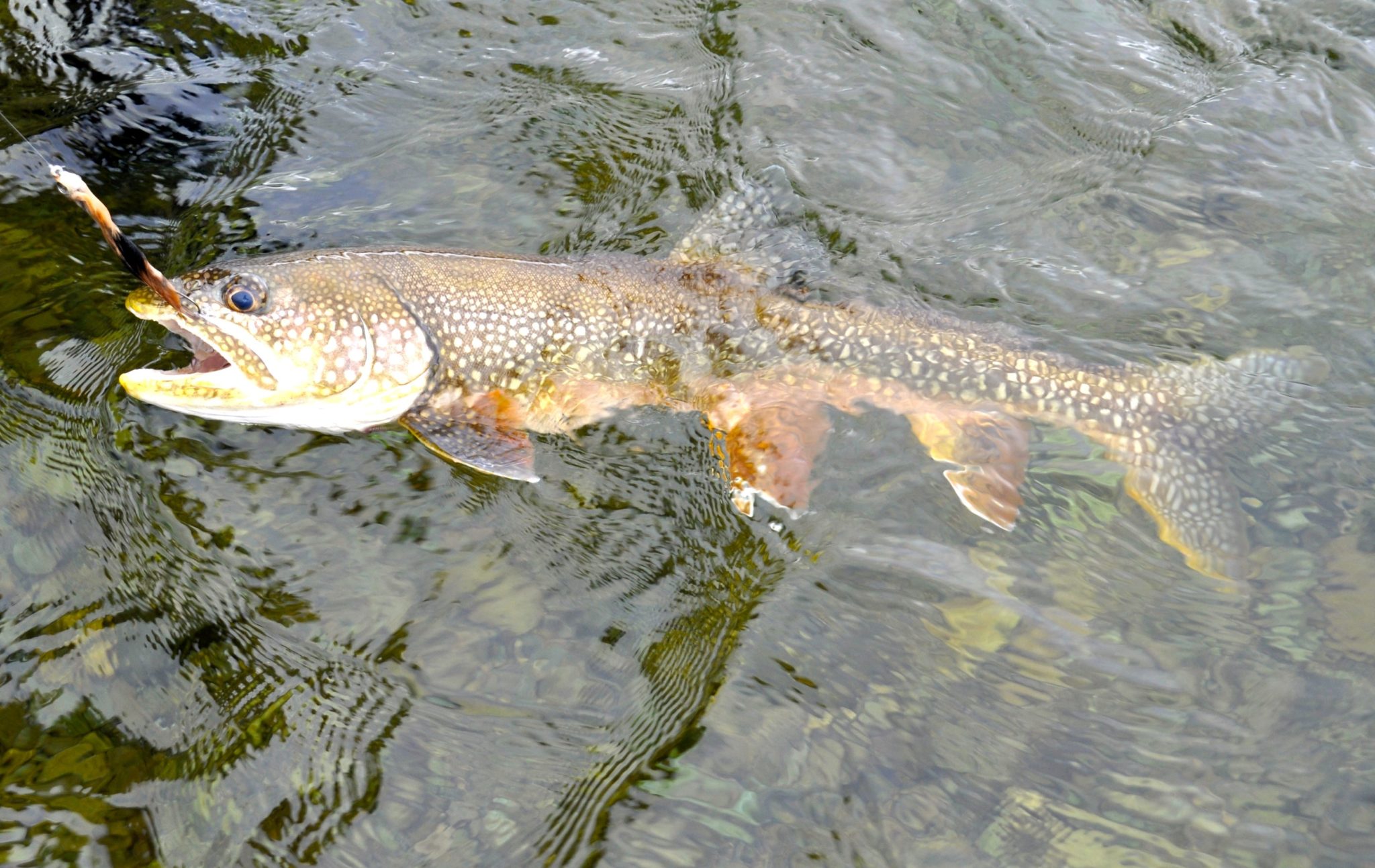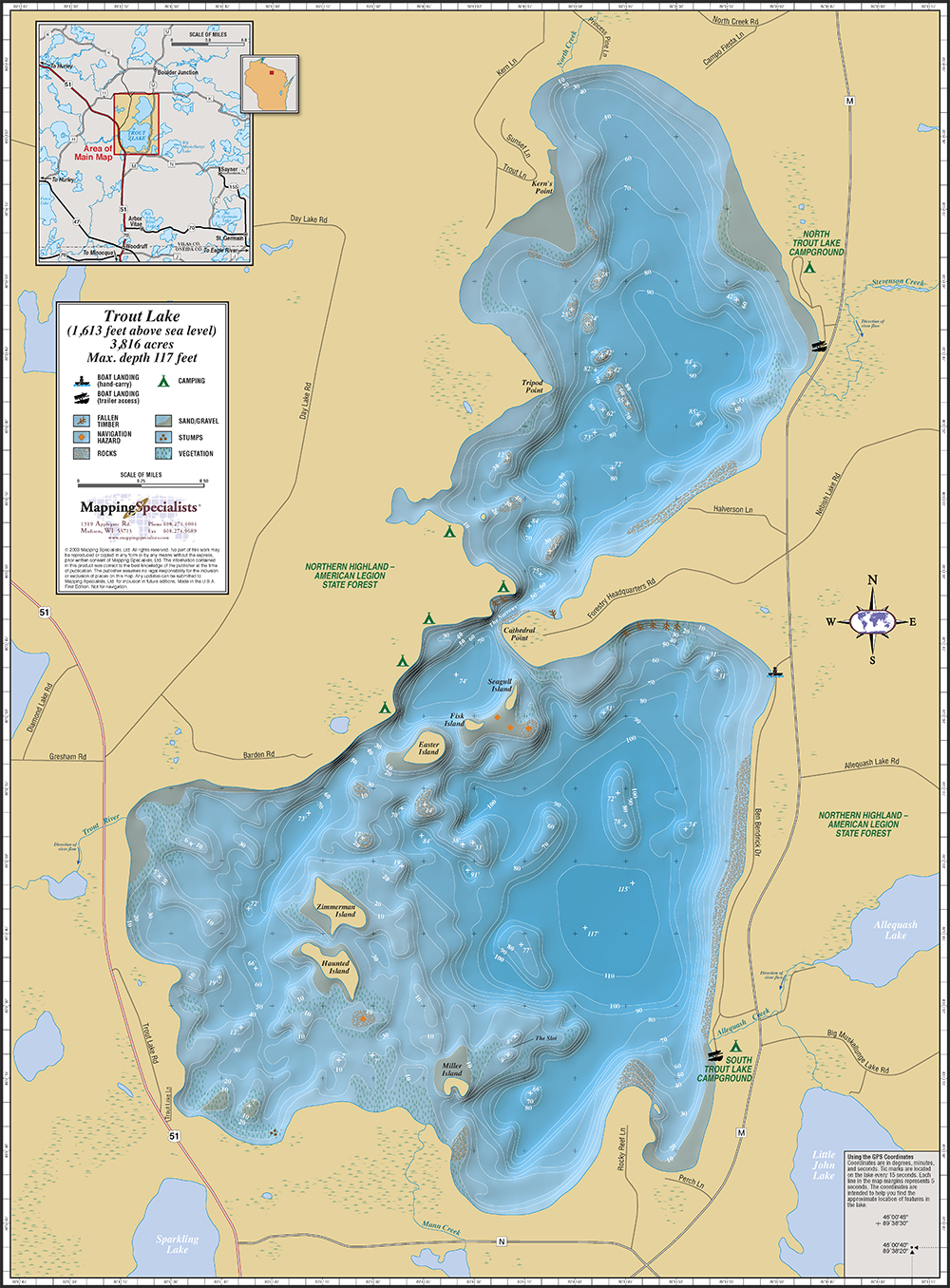

When the water reaches Lake Ontario it drops a lot of sediment forming a large sand bar at the mouth of the river. For example: In the summer warm surface water from Lake Erie runs over Niagara Falls carrying sediment.

You need to understand the water flow and current in the area where you are fishing. The great lakes are huge and have a complex current system, which is created by tides, storms and massive water flow between the lakes. On Lake Ontario I have see people fishing 150 feet deep while I have seen people fishing Lake Superior at 20 feet deep in the heat of the summer. In large boddies of water like the Great Lakes the trout can exhibit totally different behavior than they do in smaller inland lakes. In spring fed lakes you can catch them in 15 feet of water in the middle of summer. Early morning and evening you will find the best fishing depth to be around 40 to 50 feet. They will shoot up into shallower water for short periods of time to raid schools of Lake Herring, Shad, Cisco and Chub. Just above the thermocline is where the greatest number of feeding fish will be. The boundary separating higher and lower oxygen levels is caused by different water temperatures and this is called the thermocline. They can survive in lower oxygen levels but their bodies go into a state of hibernation and that does not mean good fishing. They require a minimum dissolved oxygen level of 6 parts per million or greater to be actively hunting. Generally on Ontario's inland lakes they rarely go below 55 feet deep when feeding. Many people seem to think they go to the bottom of the lake and are not accessible. They are a cold-water species and in the summer they go deep to find cooler water. Lakers are usually found in cool and deep rocky lakes. They taste fantastic and are far superior in flavour to Rainbows or Browns, which taste more like salmon. Stories about them being an oily fish are totally not true.

The best eating size Laker is 1/2 to 5 pounds.
Trout lake how to#
The perception people have is based on not knowing how to fish for them or not spending any time fishing for them a problem we solve on this fishing website. Lakers are found in hundreds of deep-water lakes in Ontario and even though they seem like a rare and elusive fish they are actually quite common in Ontario. The Lakers are a species of char and it's closest relative is the Arctic Char, which both are indigionous species to North America and a major fishing target in Ontario. They are also known by many other names such as Mackinaws or Gray Trout with it's Cree Indian name being Touladi. Their scientific name is Salvelinus Namaycush. You do not need steel wire or down-riggers to catch fish if you have a regular size boat.Ībout the Lake Trout in Ontario's Inland Lakes We have research documents, which are expert fishing tips and techniques for catching trout in the summer down deep with light action equipment. They are just a little deeper in Ontario due to warmer surface water but still easy to catch with my deep water tips and techniques.Īll the lodges, outpost camps & resorts in this web site have outstanding fishing including a few camps that claim they have the very best fishing in Ontario. Ontario has the highest population of Lakers and the most lakes of any province in Canada. Ontario is farther south than Canada's Arctic so it seems the Lakers are not as common as they are in Arctic but this is far from the truth.

Only a small percentage of people visiting Ontario have tapped into the great Laker fishing as Ontario has a reputation for other species. Ontario has the top inland lakes in Canada with Monster Trophy fish.


 0 kommentar(er)
0 kommentar(er)
